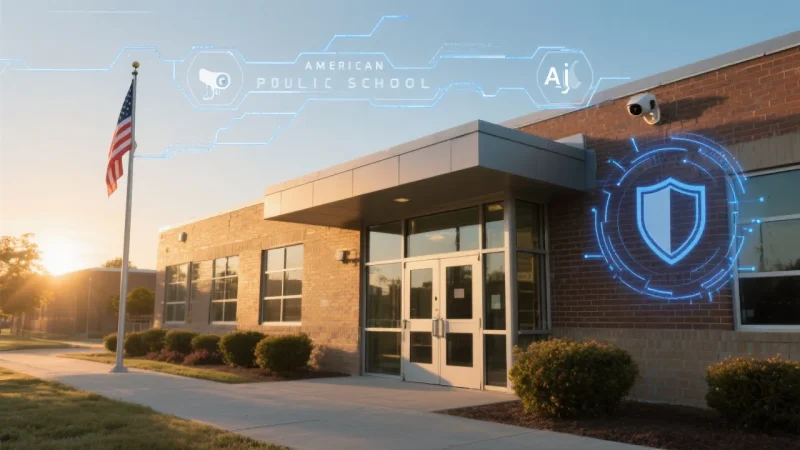
Introduction
School safety has become one of the most pressing concerns in the United States. Rising incidents of violence, natural disasters, and other emergencies have put pressure on schools to adopt smarter, faster, and more reliable safety solutions. Traditional methods like manual alarms or paper-based drills often fail to meet the urgency of real-world scenarios. This is where AI-powered emergency management systems come in.
By combining artificial intelligence with advanced communication and security tools, these systems give U.S. schools the ability to detect threats early, respond faster, and protect students and staff more effectively.
The Urgency of School Safety in the U.S.
Unlike many other countries, the U.S. faces unique safety challenges in its education system:
- Active shooter incidents: Sadly, these remain a critical concern, requiring immediate lockdown capabilities and real-time response coordination.
- Severe weather events: Hurricanes, tornadoes, and wildfires can disrupt learning and put lives at risk.
- Bullying and violence: Situations inside schools sometimes escalate into emergencies that demand swift intervention.
- Large campus sizes: Many American schools have multiple buildings, which complicates communication during crises.
With over 49 million students enrolled in public schools nationwide, even minor delays in response can have major consequences.
What Are AI Emergency Management Systems?
AI emergency management systems use artificial intelligence to detect, analyze, and respond to threats in real time. They integrate with existing infrastructure like security cameras, access control systems, and communication platforms, providing a unified hub for safety operations.
Key features typically include:
- AI-based threat detection (e.g., recognizing weapons through cameras).
- Automated alerts and lockdowns that activate within seconds.
- Mass notification systems that inform staff, students, and first responders simultaneously.
- Integration with access control to secure buildings or specific areas instantly.
- Data insights to improve emergency planning and training.
Why U.S. Schools Need AI Emergency Management Systems
1. Rapid Threat Detection
AI can identify threats, such as a weapon or suspicious behavior, faster than human monitoring alone. This gives administrators and law enforcement precious extra minutes to respond.
2. Automated Lockdowns
Instead of relying on staff to initiate lockdowns, AI-driven systems automatically secure entry points the moment a threat is detected, reducing human error and saving lives.
3. Seamless Communication
AI systems ensure every stakeholder is informed by teachers, students, parents, and local police. Mobile alerts, PA announcements, and real-time dashboards keep everyone aligned during critical moments.
4. Scalability Across Campuses
Large U.S. school districts can centralize safety management across multiple schools. AI makes it possible to oversee dozens of campuses from one command center.
5. Preparedness for All Emergencies
Beyond security threats, AI systems help schools respond to fires, severe weather, health emergencies, or power outages ensuring preparedness for any crisis.
How Coram Leads the Way in School Safety
Companies like Coram are redefining emergency management for U.S. schools with AI-driven platforms that integrate with existing infrastructure. Coram’s emergency management system connects directly with surveillance cameras, facial recognition, and access control, enabling:
- Real-time gun detection alerts.
- Automated lockdowns with secure, role-based access control.
- Unified communication channels for staff, parents, and first responders.
- Seamless integration with school management and security software.
By unifying multiple safety tools into one intelligent dashboard, Coram helps schools stay proactive rather than reactive providing peace of mind to administrators, parents, and students.
Guide to Selecting the Right AI Emergency Management System
When evaluating solutions, U.S. schools should consider:
- Integration – Can it connect with your existing cameras and access control system?
- Speed – How quickly can it detect threats and trigger responses?
- User-Friendliness – Is the platform intuitive for staff and administrators?
- Compliance – Does it meet U.S. data protection and student privacy laws (e.g., FERPA, HIPAA)?
- Scalability – Can it expand across multiple campuses or integrate with district-wide networks?
FAQs About AI Emergency Management Systems for Schools
1. Are AI emergency management systems expensive?
While initial investment is higher than traditional alarms, AI solutions often save money long-term by reducing risk and improving efficiency.
2. Can they prevent school shootings?
No system can guarantee prevention, but AI improves early detection, rapid response, and coordinated communication, significantly reducing risks.
3. Do these systems respect student privacy?
Yes. Modern solutions use encrypted data storage and comply with U.S. privacy laws, ensuring sensitive information is protected.
4. Can AI systems integrate with security cameras?
Absolutely. They work best when paired with advanced security camera networks, allowing real-time analytics and detection.
5. Are they only for large schools?
No. Both small schools and large districts can benefit AI systems can scale up or down as needed.
Conclusion
School safety in the U.S. requires more than traditional alarms and drills. With the growing complexity of threats, schools need systems that are fast, intelligent, and reliable. AI-powered emergency management systems offer the tools to detect threats early, respond immediately, and keep students safe whether it’s an intruder, a natural disaster, or a medical emergency.
Solutions like Coram’s AI emergency management platform are at the forefront of this transformation, helping U.S. schools strengthen safety and build trust with parents and communities. By adopting smart technologies, schools can focus less on fear and more on fostering safe, supportive learning environments.
